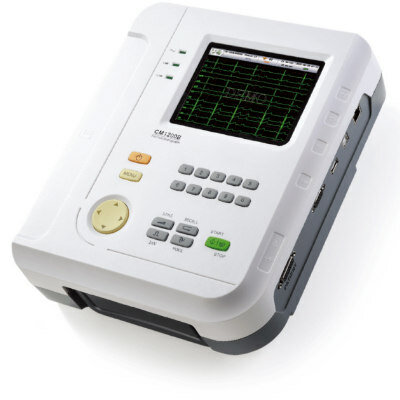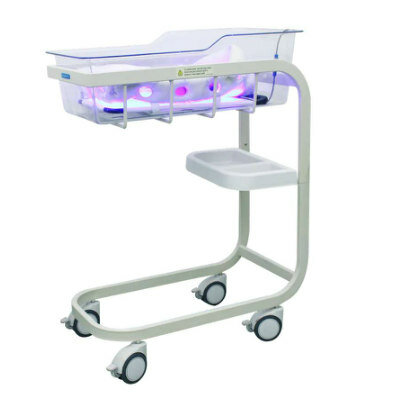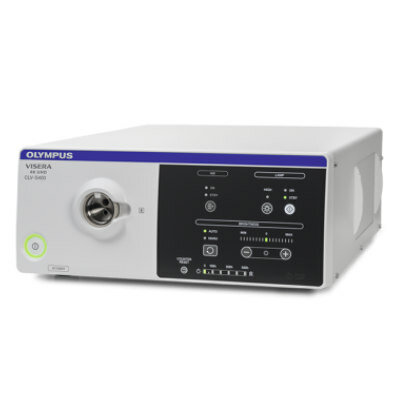Global Multiparameter Patient Monitoring Systems Market Driven by Rising Chronic Illnesses
|
By HospiMedica International staff writers Posted on 30 Nov 2022 |

Multi-parameter patient monitoring equipment is used to assess the vital signs of patients who are suffering from a serious illness. These devices are meant to give the number of data sets on one screen to comprehend the patient's status. They monitor central venous pressure and give readings such as heart rate, non-invasive blood pressure, invasive blood pressure, respiratory rate, posture, temperature, and fall detection. Other readings include ECG, SpO2, PaCO2, invasive blood pressure, and invasive blood pressure. The monitors have an alarm that allows the parameters to be set, and it will warn the caregiver if a change goes beyond the established parameters. In a variety of hospital settings, such as the coronary care unit, the intensive care unit (ICU), the neonatal intensive care unit (NICU), post-operative care, and the operating room (OR), multi-parameter monitoring devices are designed to be utilized to supply additional information to the medical and nursing staff regarding the physiological condition of the patient.
An increase in the number of people suffering from chronic illnesses, combined with an ever-growing elderly population, is expected to help the global multiparameter patient monitoring systems market register a CAGR of 5.8% over the 2022-2028 period to reach USD 15.5 billion by 2028. These are the latest findings of ReportLinker (New York, NY, USA), an award-winning market research solution.
Patients spend less time in intensive care units due to multi-parameter patient monitoring devices, which also improve the utilization of hospital infrastructure. These devices also shorten the number of time patients spend in the hospital, which results in earlier diagnosis of patient conditions. Acuity levels are used to assist medical professionals in acute care, long-term care, and other treatment and rehabilitation settings in the process of determining optimal staffing levels. Patients might not receive the level of treatment that their current state of health requires if this system were not in place. Because of this, acuity levels become more significant while dealing with a restricted number of staff members.
In the pandemic condition caused by COVID-19, it was very crucial to monitor oxygen saturation as well as the rate of breathing of patients in order to establish whether or not their lung tissue was being impacted. After infection with COVID-19, some patients may suffer from cardiac abnormalities, and recent research suggests that remote patient monitoring may be the best way to evaluate and treat such patients in the future. To properly care for the afflicted population, there is a growing demand for various types of medical supplies. In primary clinical care, the majority of the medical equipment being utilized are those that provide support for respiratory function. As a result, COVID-19 is expected to have a substantial influence on the market for multi-parameter patient monitoring.
Additionally, the burden of chronic illnesses is increasing across the world. Cancer, diabetes, and other chronic diseases including cardiovascular disease and obesity are responsible for the majority of deaths caused by chronic disorders. Moreover, the average lifespan of people across the world is rising. In today's world, the average person can live well into their sixties and beyond. All countries are witnessing a rise in the total number of elderly people as well as the percentage of the total population that is made up of elderly people. By the year 2030, one in every six persons on the planet will be at least 60 years old. The percentage of the world's population that is 60 years old or older is expected to rise from one billion in 2020 to 1.4 billion in 2050. Multiparameter patient monitors play a crucial role in the accurate monitoring of health of elderly people and patients with chronic illnesses.
However, the lack of skilled healthcare professionals could hamper the growth of the global multiparameter patient monitoring systems market. People who work directly with patients and play an important role in the functioning of a healthcare system are intended to serve as the first line of defense in the fight against widespread pandemic. According to the World Health Organization (WHO), there will be a shortage of 15 million health professionals by the year 2030, the majority of which will be in countries with poor and lower-middle incomes. Some countries in the Asia Pacific region do not have the required number of trained personnel for the proper treatment and handling of patients, acting as an obstacle for the growth of the multiparameter patient monitoring systems market.
Based on the end-use, the homecare settings segment held a substantial revenue share in the multiparameter patient monitoring systems market in 2021. Home care refers to any professional support services that enable an individual to continue living in the comfort and security of their own home. Depending on a person's requirements, support families such as nurses, aides, and therapists can offer either short-term or long-term care in the comfort of their own homes. On the basis of acuity level, the high acuity level segment held the largest revenue share in the multiparameter patient monitoring systems market in 2021. Patients with acute diseases that endanger their lives are considered high-acuity patients. These patients require continual monitoring and cautious treatment. The rising incidence of chronic diseases, such as cardiovascular diseases and respiratory disorders, is driving the growth of the high acuity level segment.
Based on device type, the fixed segment held a significant revenue share in the multiparameter patient monitoring systems market in 2021. The patient must be lying down for a fixed monitoring system to be utilized; in addition, such systems are rather large and can only be found in intensive care units of hospitals. These systems are designed to be utilized in the home by patients who do not have an immediately life-threatening disease but do require continuous or periodic monitoring by a doctor or family member. By age group, the geriatric segment held the highest revenue share in the multiparameter patient monitoring systems market in 2021. This was largely as a result of the rapidly expanding elderly population who are more likely to suffer from a variety of chronic conditions that need ongoing patient monitoring. The geriatric segment will continue to dominate the multiparameter patient monitoring systems market due to the growing number of elderly people who are afflicted with chronic conditions and require close monitoring.
Geographically, North America held the highest revenue share in the global multiparameter patient monitoring systems market in 2021 due to increased healthcare costs, growing initiatives to provide improved patient monitoring products, and rising number of public-private partnerships. In addition, a rise in the incidence of chronic illnesses and the introduction of supporting reimbursement programs are also driving the growth of the North American multiparameter patient monitoring systems market.
Related Links:
ReportLinker
Latest Business News
- Johnson & Johnson Acquires Cardiovascular Medical Device Company Shockwave Medical
- Mindray to Acquire Chinese Medical Device Company APT Medical
- Olympus Acquires Korean GI Stent Maker Taewoong Medical
- Karl Storz Acquires British AI Specialist Innersight Labs
- Stryker to Acquire French Joint Replacement Company SERF SAS
- Medical Illumination Acquires Surgical Lighting Specialist Isolux
- 5G Remote-Controlled Robots to Enable Even Cross-Border Surgeries

- International Hospital Federation Announces 2023 IHF Award Winners
- Unprecedented AI Integration Transforming Surgery Landscape, Say Experts

- New WHO Guidelines to Revolutionize AI in Healthcare
- Getinge Acquires US-Based Medical Equipment Provider Healthmark Industries
- Global Surgical Lights Market Driven by Increasing Number of Procedures
- Global Capsule Endoscopy Market Driven by Demand for Accurate Diagnosis of Gastrointestinal Conditions
- Global OR Integration Market Driven by Need for Improved Workflow Efficiency and Productivity
- Global Endoscopy Devices Market Driven by Increasing Adoption of Endoscopes in Surgical Procedures
- Global Minimally Invasive Medical Devices Market Driven by Benefits of MIS Procedures
Channels
Artificial Intelligence
view channel
AI-Powered Algorithm to Revolutionize Detection of Atrial Fibrillation
Atrial fibrillation (AFib), a condition characterized by an irregular and often rapid heart rate, is linked to increased risks of stroke and heart failure. This is because the irregular heartbeat in AFib... Read more
AI Diagnostic Tool Accurately Detects Valvular Disorders Often Missed by Doctors
Doctors generally use stethoscopes to listen for the characteristic lub-dub sounds made by heart valves opening and closing. They also listen for less prominent sounds that indicate problems with these valves.... Read moreCritical Care
view channel
Deep-Learning Model Predicts Arrhythmia 30 Minutes before Onset
Atrial fibrillation, the most common type of cardiac arrhythmia worldwide, affected approximately 59 million people in 2019. Characterized by an irregular and often rapid heart rate, atrial fibrillation... Read more
Breakthrough Technology Combines Detection and Treatment of Nerve-Related Disorders in Single Procedure
The peripheral nervous system (PNS) serves as the communication network that links the brain and spinal cord to every other part of the body. It consists of two parts: the somatic nervous system, which... Read moreSurgical Techniques
view channel
Hydrogel-Based Miniaturized Electric Generators to Power Biomedical Devices
The development of engineered devices that can harvest and convert the mechanical motion of the human body into electricity is essential for powering bioelectronic devices. This mechanoelectrical energy... Read moreWearable Technology Monitors and Analyzes Surgeons' Posture during Long Surgical Procedures
The physical strain associated with the static postures maintained by neurosurgeons during long operations can lead to fatigue and musculoskeletal problems. An objective assessment of surgical ergonomics... Read more.jpg)
Custom 3D-Printed Orthopedic Implants Transform Joint Replacement Surgery
The evolving field of 3D printing is revolutionizing orthopedics, especially for individuals requiring joint replacement surgeries where traditional implants fail to provide a solution. Although most people... Read more
Cutting-Edge Imaging Platform Detects Residual Breast Cancer Missed During Lumpectomy Surgery
Breast cancer is becoming increasingly common, with statistics indicating that 1 in 8 women will develop the disease in their lifetime. Lumpectomy remains the predominant surgical intervention for treating... Read morePatient Care
view channel
Surgical Capacity Optimization Solution Helps Hospitals Boost OR Utilization
An innovative solution has the capability to transform surgical capacity utilization by targeting the root cause of surgical block time inefficiencies. Fujitsu Limited’s (Tokyo, Japan) Surgical Capacity... Read more
Game-Changing Innovation in Surgical Instrument Sterilization Significantly Improves OR Throughput
A groundbreaking innovation enables hospitals to significantly improve instrument processing time and throughput in operating rooms (ORs) and sterile processing departments. Turbett Surgical, Inc.... Read more
Next Gen ICU Bed to Help Address Complex Critical Care Needs
As the critical care environment becomes increasingly demanding and complex due to evolving hospital needs, there is a pressing requirement for innovations that can facilitate patient recovery.... Read moreGroundbreaking AI-Powered UV-C Disinfection Technology Redefines Infection Control Landscape
Healthcare-associated infection (HCAI) is a widespread complication in healthcare management, posing a significant health risk due to its potential to increase patient morbidity and mortality, prolong... Read moreHealth IT
view channel
Machine Learning Model Improves Mortality Risk Prediction for Cardiac Surgery Patients
Machine learning algorithms have been deployed to create predictive models in various medical fields, with some demonstrating improved outcomes compared to their standard-of-care counterparts.... Read more
Strategic Collaboration to Develop and Integrate Generative AI into Healthcare
Top industry experts have underscored the immediate requirement for healthcare systems and hospitals to respond to severe cost and margin pressures. Close to half of U.S. hospitals ended 2022 in the red... Read more
AI-Enabled Operating Rooms Solution Helps Hospitals Maximize Utilization and Unlock Capacity
For healthcare organizations, optimizing operating room (OR) utilization during prime time hours is a complex challenge. Surgeons and clinics face difficulties in finding available slots for booking cases,... Read more
AI Predicts Pancreatic Cancer Three Years before Diagnosis from Patients’ Medical Records
Screening for common cancers like breast, cervix, and prostate cancer relies on relatively simple and highly effective techniques, such as mammograms, Pap smears, and blood tests. These methods have revolutionized... Read morePoint of Care
view channel
Critical Bleeding Management System to Help Hospitals Further Standardize Viscoelastic Testing
Surgical procedures are often accompanied by significant blood loss and the subsequent high likelihood of the need for allogeneic blood transfusions. These transfusions, while critical, are linked to various... Read more
Point of Care HIV Test Enables Early Infection Diagnosis for Infants
Early diagnosis and initiation of treatment are crucial for the survival of infants infected with HIV (human immunodeficiency virus). Without treatment, approximately 50% of infants who acquire HIV during... Read more
Whole Blood Rapid Test Aids Assessment of Concussion at Patient's Bedside
In the United States annually, approximately five million individuals seek emergency department care for traumatic brain injuries (TBIs), yet over half of those suspecting a concussion may never get it checked.... Read more















